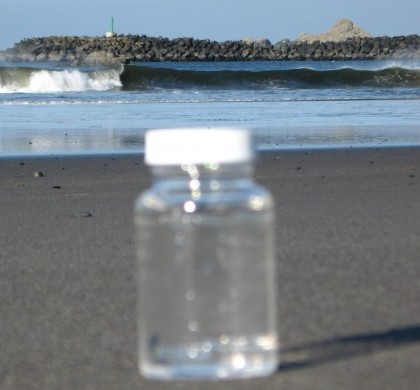
The Department of Environmental Quality (DEQ) is revising standards for coastal recreational water quality contact in response to the new mandates handed down from EPA and changes in the federal BEACH Act program. These new standards, separate from the new beach advisory levels, provide clarity in bacterial pollutant criteria for some recreational activities, but further complicate water quality enforcement for our beaches - particularly around the highest polluting freshwater sources where children and beachgoers recreate most.
Exposure to high levels of bacteria from swimming and other full immersion water contact recreation is associated with increased gastrointestinal illness. Surfers, swimmers and beachgoers shouldn't get sick from a trip to the beach! DEQ monitors, manages and enforces water quality within our recreational waters and works collaboratively with the Oregon Health Authority which issues public advisories for water quality contact. Collectively, these monitoring programs and resulting management actions are about protecting public health and your right to clean and healthy beaches!
In addition to revising the bacteria criteria for coastal recreation waters, DEQ clarified where freshwater and coastal recreation and shellfish harvesting uses occur and, therefore, where the different bacteria criteria (E. coli, enterococcus, or fecal coliform) apply. But DEQs new standards fall short in one particular area of clarity, our beaches - particularly those with freshwater creeks and outfalls. By applying two separate standards for freshwater and saltwater, a line in the sand has essentially been drawn that will inevitably complicate water quality enforcement on our beaches.
What we will now have is one water quality standard for the ocean, with the monitoring results subject to triggering health advisories. Just a few yards or less landward on the beach, where say a polluted creek runs out onto the beach, a separate water quality standard,
not subject to health advisories, will be applied. Now think a moment on where the highest exposure likely lies on Oregon's beaches. Is it in the ocean or on the beach - you know, those little outfalls and creeks that kids like to play in?
Are we really protecting the public's health?
DEQ also is proposing to change the averaging period for the E. coli criterion from 30 days to 90 days and Surfrider generally supports this extended averaging period, due the highly dramatic swings in bacteria levels, both anthropogenic and natural.
We could write tomes on the limitations of the various monitoring programs, but eye-poking resource-strapped agencies isn't likely going to get us much progress. The reality is that these programs run on austerity budgets, continually facing
federal budget elimination. Surfrider's priority in Oregon, at this time, is
building local partnerships for solutions, given it's essentially at the local level where we'll actually make progress for solutions. We do this through our
Blue Water Task Force Programs,
Ocean Friendly Gardens and
Green Streets Programs. We also run these monitoring and water quality programs year round, where our state agencies are only able to monitor for a small portion of the year (Memorial through Labor Day).
Our Surfrider programs collectively are generally the cornerstone to larger projects and campaigns at the local level within our chapter network, where believe it or not, we can actually solve some of these pollution issues!




